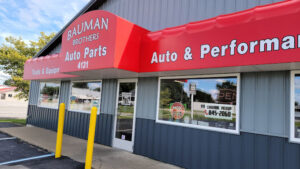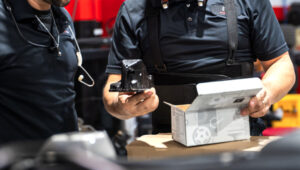Internal combustion engine vehicles could remain on the road even longer than is common today, creating a golden age for the ICE aftermarket
Fort Wayne, Ind.—Vehicles are one of the few consumer products that have a series of owners, and it is not uncommon in the U.S. for a car or light truck to have five or more owners during its life on the road. However, not all vehicle owners are alike, according to the latest Lang Aftermarket iReport. Buyers of new all-electric vehicles often have environmental values, transportation needs and financial resources that differ significantly from those of pre-owned (used) vehicle buyers.
“The operating characteristics and demands of today’s battery electric vehicles (BEVs) will not satisfy the vehicle needs of a large share of buyers in the pre-owned market, who drive the vast majority of cars and light trucks in operation (VIO),” stated the report. “This could result in internal combustion engine (ICE) vehicles remaining on the road even longer than is common today, creating a golden age for the ICE aftermarket that will extend to 2040 and beyond.”
The following are highlights of the report.
All-Electric Vehicle Focus
In five years, BEVs will represent most new electric vehicle sales in the U.S. (BEVs and hybrids).
Vehicle Lifecycles in The U.S.
• Vehicles are owned by a succession of consumers, who often differ significantly in their environmental values, transportation needs and financial resources.
• Most cars and light trucks in the U.S. are not driven by their original buyers. Only a small portion of the U.S. adult population purchases new vehicles.
• The average age of light vehicles in the U.S. now tops 12 years, older than the vehicle mix of most major countries, and approximately one-fifth of cars and light trucks on U.S. roads are at least 16 years old. This means that for BEVs to be a viable alternative to ICE vehicles they must meet the needs of a series of buyers and not just those who buy them new.
New Vehicle Buyers Versus Used Buyers
Electric vehicles (especially all-electric models) remain largely an “enthusiast” market in the U.S. and have yet to expand to the mainstream of new vehicle buyers.
Many buyers of new BEVs in the U.S. can overlook and overcome some of the operational limitations and unique characteristics of EVs at their present level of technology (and for some years to come).
Three of the most significant operational differences between BEV and ICE vehicles are driving range, charging (fueling) issues and reliable performance over a long number of years.
BEV Range Challenge
More than three-quarters of today’s new BEV buyers purchase equipment to charge them at home. As BEVs move into the used market, many pre-owned buyers will not be able to charge them at home (they live in an apartment, cannot afford the necessary equipment, etc.), so they will face more significant charging problems than today’s new EV buyers.
A nationwide network of fast-charging and convenient stations must be in place for pre-owned buyers to fully embrace all-electric EVs. This will become urgent when all-electric EVs grow in number and are more widely distributed across the U.S.
The construction of an efficient and convenient charging infrastructure is a massive challenge and, most likely, it will not be achieved for many years, even with strong government support.
The significance of this BEV charging problem is underscored by the fact that it is the top reason why approximately one-fifth of new BEV buyers cut the cord and return to ICE vehicles when making their next auto purchase. Several times this portion of EV buyers have probably experienced serious charging problems.
Aging Electric Vehicles
It is still unclear how long BEV batteries, their most costly component, will last. Battery replacement can top $6,000. That cost would scrap a 12-year-old BEV, compared to the average age of vehicles on U.S. roads that exceeds 12 years.
In addition to batteries, some BEVs (notably Tesla) can have other problems as they age. A Tesla often cannot operate if certain body parts are damaged, due to sensors and other electronic issues. Some of these debilitating damages can be relatively minor, such as a dented fender.
Since approximately 30% of vehicles on the road have unrepaired body damage, this could present a problem to owners of older BEVs, especially Teslas (which presently account for most of the BEVs on U.S. roads).
ICE Vehicles Will Gain Extended Life
It will be a number of years before all-electric EVs evolve to the point where they can match ICE vehicles in all operating conditions: long-distance driving, extreme weather, and off-road use, to name a few.
For these and other reasons, consumers are likely to keep ICE vehicles in operation for a longer time in the future than they do today.
EVs Will Not Work for Many Pre-Owned Buyers
EVs will undoubtedly increase their share of new vehicle sales across the U.S., but it remains to be shown that EVs will satisfy the needs, values and resources of pre-owned vehicle buyers, who drive more than 80% of the cars and light trucks on U.S. roads.
This likely will produce an ICE aftermarket Golden Age that will extend well past 2040.









Comments are closed.